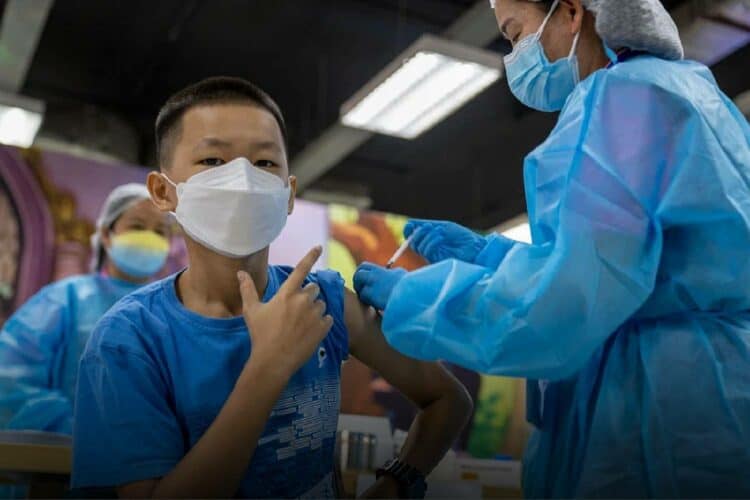China insists there are no unusual pathogens in the respiratory outbreak, amidst a rise in flu-like illnesses affecting children.
WHO keeps a close eye on China new respiratory outbreak
As reported by BBC News, the World Health Organisation (WHO) sought additional details from China concerning media reports and ProMed alerts about undiagnosed pneumonia in children.
In response, China’s National Health Commission (NHC) stressed its focus on diagnosing and treating these respiratory illnesses.
The WHO later confirmed that China identified no novel pathogens, attributing the surge in respiratory diseases to multiple known pathogens.
Pneumonia, caused by various pathogens, has seen a rise in cases in northern China. This increase, earlier in the season than usual, is linked to the lifting of COVID-19 restrictions, a pattern observed in other countries as well.
The WHO continues to monitor the situation closely, maintaining communication with Chinese authorities.
“We have also requested further information about recent trends in the circulation of known pathogens including influenza, SARS-CoV-2, RSV and mycoplasma pneumoniae, and the current burden on health care systems,” the organisation noted.
This open request for information is somewhat unusual, as the WHO generally uses private channels for such inquiries.
However, the COVID-19 pandemic’s legacy has heightened sensitivity to reports of viruses in China, prompting a more transparent approach.
Thus far, Chinese officials have attributed the spike in respiratory diseases, including influenza, COVID, mycoplasma pneumoniae, and respiratory syncytial virus (RSV), to the easing of COVID restrictions.
Similar trends were observed in the UK and the US. Experts suggest that China is experiencing a significant wave of childhood respiratory infections, likely due to reduced immunity from prolonged lockdowns.
However, the lack of widespread adult infections points away from a novel virus, suggesting existing immunity from previous exposures.
“While WHO seeks this additional information, we recommend that people in China follow measures to reduce the risk of respiratory illness, which include recommended vaccination; keeping distance from people who are ill; staying home when ill; getting tested and medical care as needed; wearing masks as appropriate; ensuring good ventilation; and regular hand-washing,” the WHO recommended.






